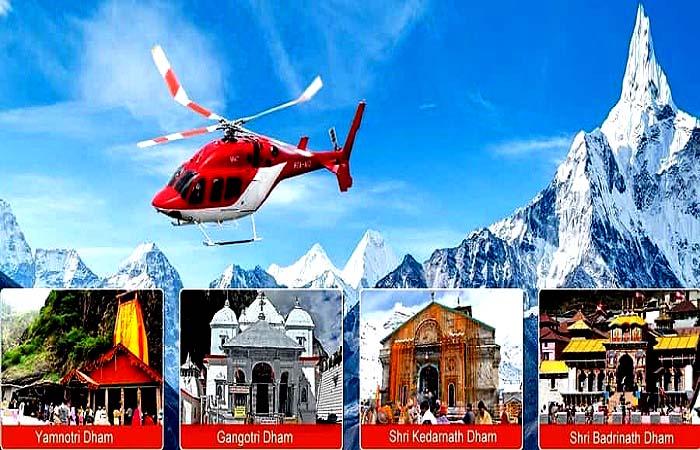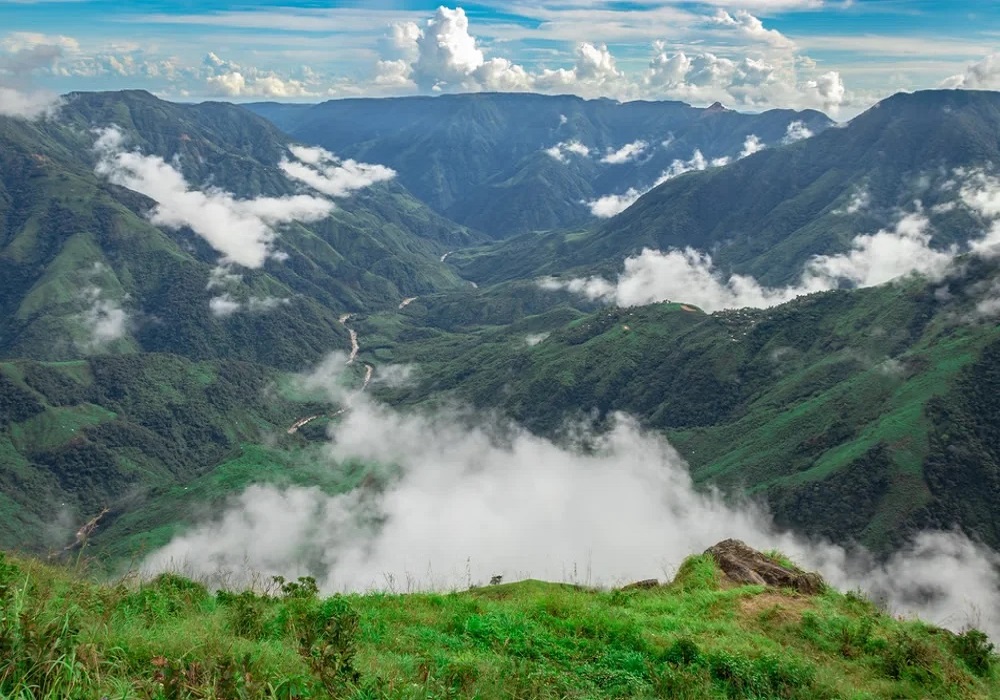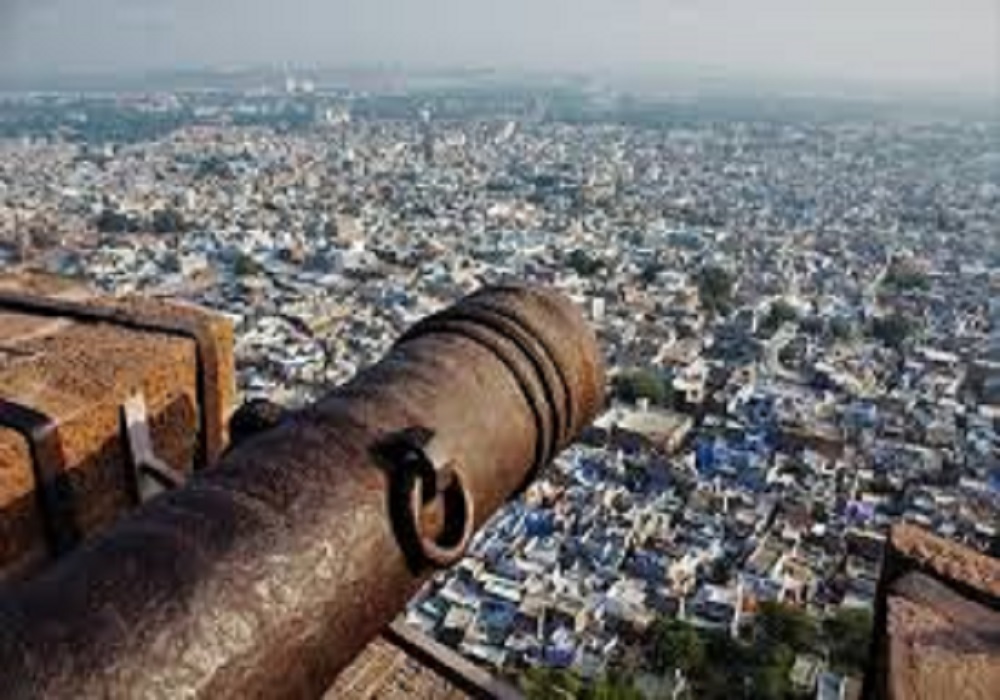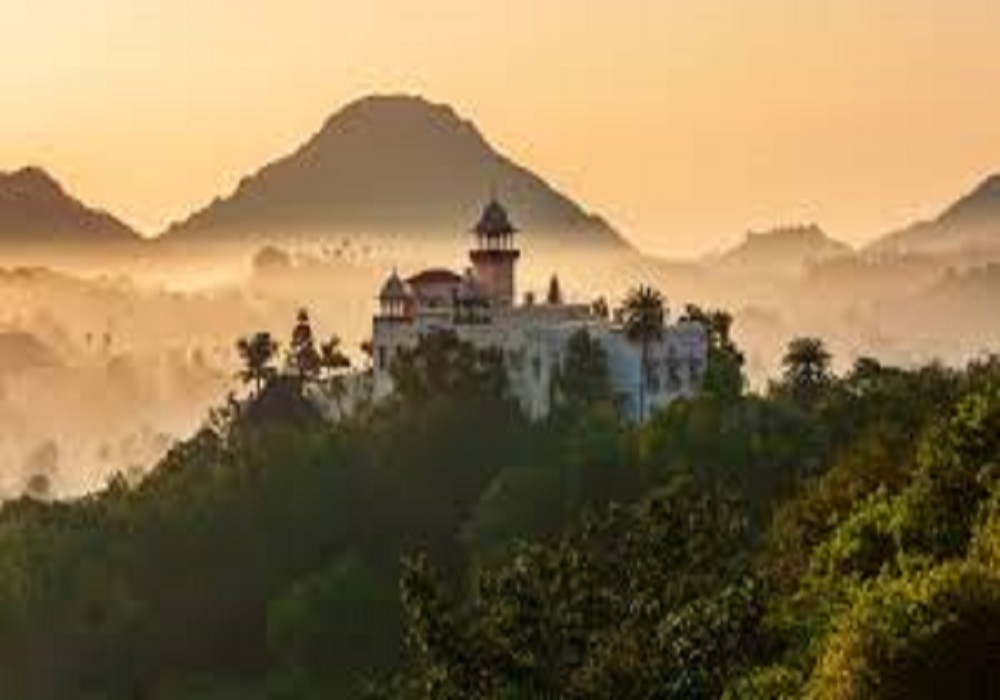Chardham Yatra

Published: 18 May 2021 • Last Updated: 03 Feb 2023
Chardham Yatra Tour
Are you searching for Chardham Yatra packages to fulfil your sacred desires? Situated in the Garhwal area of Uttarakhand, indeed high in the Garhwali Himalayas are a portion of Hinduism's most critical locales, additionally called Chota Char dham - Kedarnath, Badrinath, Gangotri and Yamunotri. The sanctuaries here denoting the otherworldly wellsprings of the religion's four consecrated waterways - Ganga, Yamuna, Alaknanda and Mandakini, together making up quite possibly the most unmistakable journey circuits in the country. The time among April and November every year observes the happening to fans in thousands who valiant the unforgiving climate, the misleading mountain streets and trails to get to them. The incredible savant and reformer, Adi Shankaracharya in the eighth century united every one of these journeys into a sort of profound circuit, one taken by a great many ages, keeping up the yearly custom of visiting these journeys every year.
Best Suited time for Chardham Yatra Tour
Your highly admired Chardham Yatra, would normally be locked in the middle of April and early November. Consistently, the public authority of Uttarakhand reports the dates for the opening and shutting of the Chardham circuit, starting off the way toward booking a Chardham package with Trvme. In the cold weather months, the divinities at every one of these places of worship are moved to their colder time of year houses. Ukhimath for Kedarnath, Joshimath for Badrinath, Mukhba for Gangotri and Kharsali for Yamunotri. The entryways of these colder times of year residences stay open during that time and can be visited whenever the timing is ideal.
Must visit Destinations in Chardham -
Kedarnath
Kedarnath lies near the wellspring of the Mandakini River, the Chorabari Glacier and is upheld by the chilly Himalayan pinnacles. It is at a height of 11,755 foot with Gaurikund being the nearest street head to Kedarnath, being around 14 kilometer away. The stone protuberance adored inside the sanctuary has a fanciful association that follows its underlying foundations in the epic Mahabharata where the Pandavas in the wake of overcoming the Kauravas who were after the entirety of their own relatives, looked for kindness of Lord Shiva. However, Shiva would not pardon them, turning the Pandavas more fearless in their will to look for absolution. Shiva to dodge them transformed into a bull and came to earth. In his surge, he left his protuberance in Kedarnath, adequately close to the Chorabari Glacier, a spot set apart by an eighth century sanctuary of Adi Shankaracharya. Different pieces of the bull's body are adored at the other four Panch Kedar altars. The bull's arms at Tunganath, navel at Madmaheshwar, face at Rudranath and hair at Kalpeshwar. Prior to booking one of the Chardham occasion bundles, ensure it incorporates a visit to the Kedarnath sanctuary.
Badrinath
Badrinath Temple also has a staggering setting at the foundation of the pyramid-formed, snow-covered Nilkantha top, committed to Lord Vishnu. Beautifully found, it additionally turns out to be one of Chardham's most effectively available sanctuaries established by Guru Adi Shankaracharya in the eighth century. The sanctuary however has been repaired and redesigned throughout some stretch of time. At the foot of the sanctuary are underground aquifers whose waters arrive at a blistering 40 degree Celsius, filling in as a clothing and shower house for local people. Adi Shankaracharya who assembled the first Badrinath Temple had discovered the Badrinayaran icon in the Alakananda River. The sanctuary the way things are today was implicit the sixteenth century by the King of Garhwal complete with its intricate carvings, stone inserting, sections, giving the sanctuary the presence of a Buddhist Vihara. Rumors from far and wide suggest that Lord Shiva pondered this spot for a long time while Goddess Lakshmi offered shade to him as a Badri tree, getting the spot its name. Indeed, even today, the encompassing Kedar-Badri valley is accepted to be the home of Lord Shiva, an explanation individuals record their yearly Chardham visit around Mahashivaratri when the celebrations siphon life and shading into the sanctuaries.
Gangotri
The Gangotri Temple is perhaps the holiest place of worship in the country essentially for being a wellspring of the most loved Hindu stream, the Ganges. As per folklore, the stone on the site filled in as a pad to save the earth from destruction the waterway might have caused as it spilled out of Shiva's tangled secures paradise. Master Shiva is accepted to have set that rock deliberately to take the assault of the spouting waters. The Gangotri Temple returns to the eighteenth century when it was worked by Amar Singh Thapa, a Gorkha administrator. In spite of the fact that it is Gaumukh which is the principal wellspring of the Ganges, Gaumukh being an ice sheet around 19 kilometer further from the Gangotri Temple. Gangotri at a height of 10,170 foot lies on the banks of the Bhagirathi River, Ganga being called Bhagirathi till it arrives at Devprayag, where Bhagirathi meets the Alakananda to shape the Ganges. The Gangotri Temple opens on Akshay Tritiya, regularly in May and closes down on Bhai Duj, normally in late October or November. Beholding back on Ganga's recuperating and otherworldly properties, explorers convey back bottles brimming with heavenly water from here. The Gangotri locale has a rich biodiversity, being wealthy in a few endemic types of vegetation.
Yamunotri
Among the Chardham journeys, the Yamunotri Temple was implicit the nineteenth century near the wellspring of the blessed Yamuna River. The sanctuary is around a 5 kilometer climb from a distant town called Janki Chatti. There are a few underground aquifers around the sanctuary which are fine for taking a dunk in; you will likewise discover travelers cooking potatoes and rice as prasad at the sanctuary. You can coordinate your puja at an expense with the nearby clerics at the sanctuary. Yamunotri, the wellspring of the Yamuna River is encased by forested pinnacles and a delightful, rambling valley. The second holiest stream in the country after the Ganges also has a legendary associate. It is viewed as that a plunge in the Yamuna, accepted to be the girl of Surya and sister of Yama, purges you of your transgressions. The high-point of Yamunotri, nonetheless, stays the underground aquifers around it where rice is cooked and made into prasad which is disseminated among aficionados at the sanctuary. In and around the Yamunotri Temple are numerous hallowed places, sanctuaries and ashrams which you can turn upward as well and take in the blessed air of one of Chardham's most beguiling locales.
Step by step instructions to arrive at Chardham
Delhi to Haridwar :
Begin your excursion from Delhi and cover the 210 kilometre in around 6 hours in one or the other transport or vehicle. There are a lot of state and private transports utilizing on this course. Subsequent to stopping for the time being in Haridwar where you can watch the Ganga Aarti in Har ki Pauri, you can start your excursion the next morning for Barkot.
Haridwar to Barkot :
Begin early morning for your first Chardham sanctum, the Yamunotri by heading out to Barkot which is 200 kilometer away with the excursion requiring almost 10 hours. Yamunotri is around 40 kilometre further. Barkot, a little village, is at an elevation of 4002 foot. The perspectives around Barkot are flawless and staggering, permitting you a brief look at the Bandarpunch Peak that stays canvassed in snow throughout the entire year, exceptionally near which is the wellspring of the Yamunotri. You can stop for the time being in Barkot and leave the next morning for Yamunotri.
Barkot to Yamunotri and back to Barkot:
Leave early morning post breakfast and proceed with the drive towards Yamunotri which includes a 36 kilometre travel and a 7 kilometre journey, taking you almost 5 hours to arrive at Yamunotri. Rather than climbing, you can even cover the distance on a pony. Get back to remain in Barkot for the evening.
Barkot to Gangotri :
Begin first thing in the morning and head towards Gangotri which requires around 9 hours from Barkot, being 210 kilometre away. On the way you can stop at the high temp water spring of Gangnani. To visit the legitimate wellspring of the Ganga River, you need to travel further 19 kilometre up to Gaumukh, home to the Gangotri Glacier, from the Gangotri Temple.
Gangotri to Uttarkashi: It is a terrific fondling waking in Gangotri. Investigate around, see the shocking vistas prior to starting your excursion to Uttarkashi. Uttarkashi is around 95 kilometre away and you will cover the distance in around 4 hours. You can go through the night in Uttarkashi which is at a height of 5209 foot between the Ashi and Varuna Rivers. These streams converge into the Bhagirathi from the two closures of the little town. Uttarkashi has waterway ghats actually like Varanasi or Kashi after which it is named. Visit the Vishwanath Temple in Uttarkashi, among one of the significant activities in Chardham. Among different sanctuaries you can visit in this little spot are Bhairav and Annapurna Temples.
Uttarkashi to Sitapur :
After breakfast, head for Sitapur which is around 212 kilometre away with the excursion time being around 10 hours. Sitapur at a height of 5971 foot above ocean level is only 7 kilometres from Gaurikund and around 26 kilometres from Guptkashi. Sitapur is generally just 2 kilometre from Son Prayag which lies at the intersection of Mandakini and Basuki Rivers. Somewhere else you can visit during your visit in Sitapur incorporate Triyuginarayan, the site of the marriage between Lord Shiva and Goddess Parvati. It is around 14 kilometre away and 5 kilometre further by foot. Nearby is a boiling water spring and the sanctuary of Gauri Devi, the site where Goddess Parvati thought for a spouse like Lord Shiva.
Sitapur to Gaurikund to Kedarnath :
Post breakfast, head for Gaurikund which is a two-hour drive from Sitapur. You need to put together your lunch and convey sufficient water for the remainder of the excursion. Subsequent to arriving at Gaurikund, you will start your journey to Kedarnath which is around 14 kilometre away. You will make an overnight stop in Kedarnath. The entire excursion from Sitapur to Kedarnath will require approximately 9 hours. This is one of the remotest of the Chardhams settled in an amazing regular setting. Transcending pinnacles of snow, gem streams and waterways welcome you in this place that is known for Lord Shiva's sanctuary sanctum. You can do the trip from Gaurikund to Kedarnath on a pony in the event that you can't deal with the climb.
Kedarnath to Rudraprayag :
Trek back the 14 kilometre distance from Kedarnath to Gaurikund where you can stop for your morning meal. From Gaurikund, leave for Rudraprayag which is 75 kilometer away. In transit you can stop at Sitapur for lunch prior to continuing to Rudraprayag. Rudraprayag is at the conversion of the Mandakini and Alakananda Rivers. It is around 34 kilometre from Srinagar in Garhwal. The site is of legendary significance since it was the place where Narad Muni venerated Lord Shiva and who showed up as Rudra, a symbol of Shiva, and favoured him. Rudraprayag is staggering outwardly and loaded up with fascinating tales tracing all the way back to the Puranas.
Rudraprayag to Badrinath :
After breakfast in Rudraprayag, leave for your last Dham, Badrinath which is around 160 kilometre away, taking a drive season of almost 8 hours. Ensure you leave early with the goal that you arrive at the Badrinath Temple on schedule for evening puja and darshan.
Badrinath to Birhi :
After going through the night in Badrinath, and the better piece of your early daytime absorbing the heavenly emanation of the spot, leave for Birhi at noon. The excursion from Badrinath to Birhi requires almost 5 hours, being around 95 kilometre away. You would go through the night in Birhi.
Birhi to Rishikesh :
Post breakfast, continue to Rishikesh which is around 160 kilometre away, requiring about 7 hours. You can go through the evening in Rishikesh at the lower regions of the Himalayas, by the Triveni Ghat or peruse the Ram and Lakshman Jhula, take in its nonconformist energy, and the irresistible energy of this old town. Rishikesh is normally an all-veggie lover city just as liquor free.
Rishikesh to Delhi :
After going through a night in Rishikesh, you can go to Delhi by transport, or head to Haridwar and from the Haridwar Railway Station take an AC train back to Delhi.



